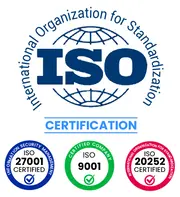

- Global Market Outlook
- In-depth analysis of global and regional trends
- Analyze and identify the major players in the market, their market share, key developments, etc.
- To understand the capability of the major players based on products offered, financials, and strategies.
- Identify disrupting products, companies, and trends.
- To identify opportunities in the market.
- Analyze the key challenges in the market.
- Analyze the regional penetration of players, products, and services in the market.
- Comparison of major players’ financial performance.
- Evaluate strategies adopted by major players.
- Recommendations
- Vigorous research methodologies for specific market.
- Knowledge partners across the globe
- Large network of partner consultants.
- Ever-increasing/ Escalating data base with quarterly monitoring of various markets
- Trusted by fortune 500 companies/startups/ universities/organizations
- Large database of 5000+ markets reports.
- Effective and prompt pre- and post-sales support.
Key Emerging Trends in the Geofoam Market
The pace of change within the Geofoam has been so rapid reflecting increasing demand for lightweight versatile construction materials in recent years. It is widely used in various civil engineering applications due to its unique properties (Geofoam). One notable trend involves more infrastructure projects adopting Geofoam because it reduces overall project costs along with decreasing construction time constraints (Zhang et al., 2012). As a light material it offers an alternative fill solution to traditional options providing excellent load bearing capability with minimum settlement problems.
In addition, sustainability has become a major concern for the construction industry resulting in eco-friendly orientation of the Geofoam market. In terms of being recyclable, geo-foams meet the global push on sustainability making them attractive for adoption by environment friendly projects. This trend is supported further by stricter regulations and standards that encourage increased use of green buildings; thus increasing demand for geo- foams as a sustainable choice in building works.
Another striking issue relates to expanding application areas for geo-foams within transport infrastructure development. It serves as an ideal material for road and bridge construction due to its high compressive strength and light weight properties. Geo-foam has become widely used in highway embankments and bridge abutments as it reduces soil settlement while providing stable support. Furthermore, the globally increasing enhancement of transportation networks is making a demand for innovative and efficient building materials (Wu et al., 2015).
At the same time, researches aimed at improving the characteristics of Geofoam are being conducted intensively to expand its range of application. Manufacturers are investing in technological advancements that will help improve thermal insulation properties of Geofoams so as to allow their use in geotechnical and environmental engineering applications. This continuous innovation is expected to create new opportunities for geo-foams such as retaining walls, slope stabilization, landfill closures etc.
Players in this industry are looking at strategic alliances and partnerships as an alternative means of strengthening market presence and broadening products coverage. The aim of these collaborations is to enhance synergies with different types of construction with engaging Geofoam in diverse projects (Rashid & Hinze, 2009). Additionally, there has been an influx of new entrants into this market thereby leading to increased competition that spurs further innovations in both Geofoams products’ development process including their functionality.
Covered Aspects:| Report Attribute/Metric | Details |
|---|---|
| Market Opportunities | Volatility in raw material prices |
Geofoam Market Highlights:
Leading companies partner with us for data-driven Insights
Kindly complete the form below to receive a free sample of this Report
Tailored for You
- Dedicated Research on any specifics segment or region.
- Focused Research on specific players in the market.
- Custom Report based only on your requirements.
- Flexibility to add or subtract any chapter in the study.
- Historic data from 2014 and forecasts outlook till 2040.
- Flexibility of providing data/insights in formats (PDF, PPT, Excel).
- Provide cross segmentation in applicable scenario/markets.









